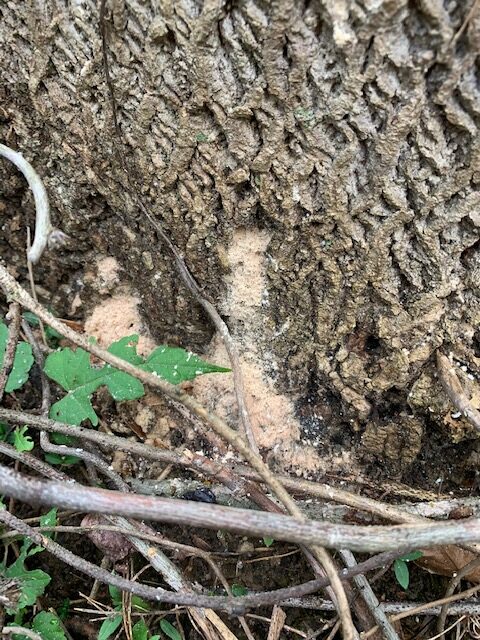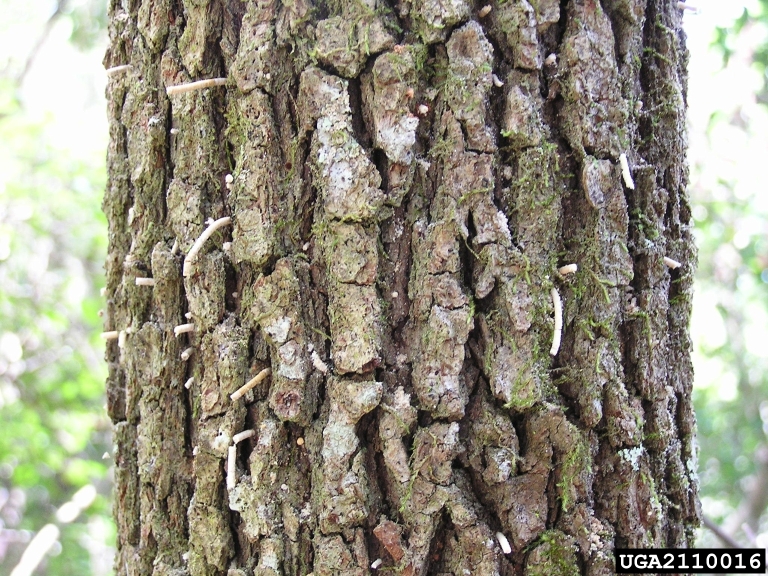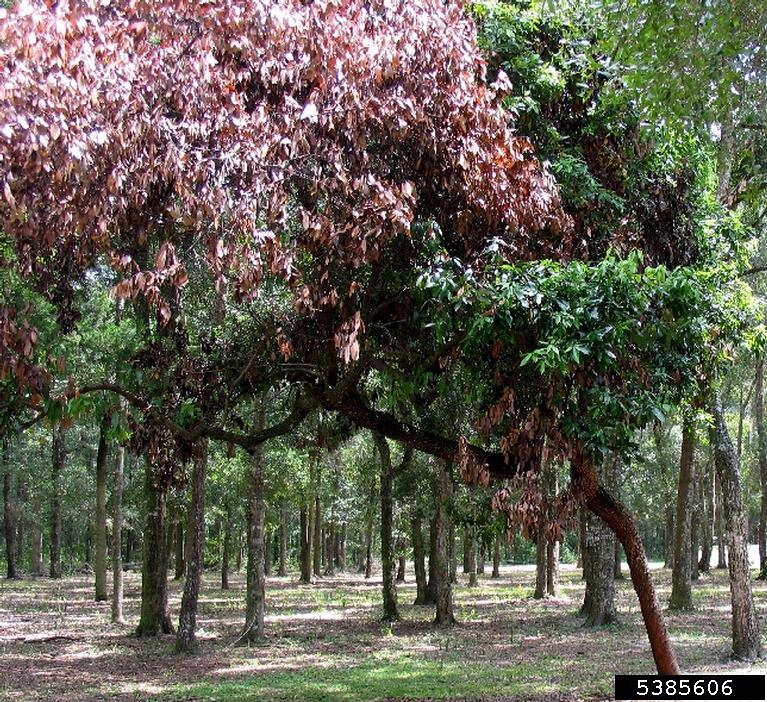
Ambrosia Beetles like to play a little game called “Survival of the Fittest.”
These borer beetles prey on the weakest trees of the bunch; however, if you think your trees are healthy and safe from this tree borer, think again.
Although not as common, there are several exotic species that can still infest and kill healthy trees.
So, what are Ambrosia Beetles and what can you do?
Photo by: Daniel Adam, Office National des Forêts, Bugwood.org
Ambrosia Beetles: Wood Boring Damage
Burrow, cultivate, dine, decline.
In just these four steps, the boring beetle causes tree mortality.
First, these beetles tunnel into the wood, leaving round holes as they enter the tree through its bark. When they enter, they introduce a deadly fungus which they feed on inside the tree.
Here’s the catch: trees don’t like the fungus. They respond negatively, and this factor itself is one of the main reasons for tree decline.
The infestation process introduces two other reasons for tree decline: general boring damage and a secondary pathogen. Any of these three events done by the wood boring beetles can lead to tree mortality.
What does an Ambrosia Beetle look like?
- These borer beetles are small, reddish brown to nearly black, cylindrical beetles.
- Depending on the species, the tree borer may infest trees any time from spring to fall.
Ambrosia Beetle: Susceptible trees
Ambrosia Beetles target mature hardwood trees – even those that are healthy.
Although most healthy trees can clog the holes manifested by the borer, certain Ambrosia Beetle species will still be able to damage healthier trees.
Still, it is more often that the tree bug will infest weakened or stressed trees. This is because stressed trees will release ethanol, which attracts Ambrosia Beetles.
Factors that weaken trees and can lead to Ambrosia Beetle infestation include:
- Soil compaction
- Extreme weather (Drought, flooding, frost)
- Extreme temperatures
- Diseases
- Construction damage
- Poor plant management
Ambrosia Beetle: Signs and Symptoms
- White boring dust around the base of the tree and in crevices
- Wilting foliage and branch dieback
- Strands of frass (“toothpicks”) that protrude from stems, branches, or tiny holes in bark


James Johnson, Georgia Forestry Commission, Bugwood.org
Ambrosia Beetle: Treatment
Wondering how to get rid of tree borers?
Unfortunately there is no real treatment against Ambrosia Beetle infestation. The only way to protect against them is by preventing them in the first place.
This means engaging in proactive maintenance and care; keep your trees healthy!
To care for your trees and keep them flourishing, we recommend mulching, fertilizing, watering, and bark sprays.
>> Read here for more information on these treatments and on this borer beetle.
Worried your trees are infested with Ambrosia Beetles? If they are, it’s important to stop the spread of Ambrosia Beetles to other trees on your property. This next step toward optimal care is through professional tree removal.
Our Certified Arborists will help you through this process by providing your landscape with the safety, expertise, and protection it needs.



